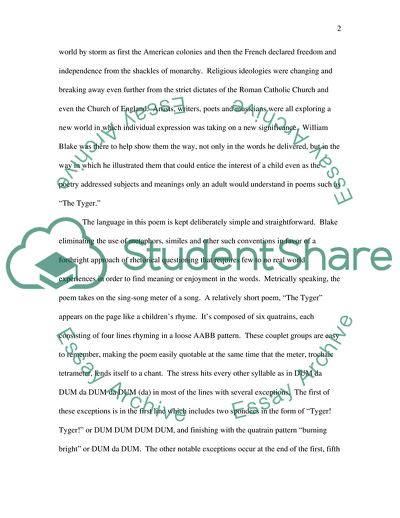Cite this document
(William Blake's The Tyger Book Report/Review Example | Topics and Well Written Essays - 2250 words, n.d.)
William Blake's The Tyger Book Report/Review Example | Topics and Well Written Essays - 2250 words. Retrieved from https://studentshare.org/literature/1731896-stylistically-analyse-the-tiger-by-william-blake-and-put-it-into-historical-and-generic-context-in-what-ways-does-it-imagine-and-represent-childhood
William Blake's The Tyger Book Report/Review Example | Topics and Well Written Essays - 2250 words. Retrieved from https://studentshare.org/literature/1731896-stylistically-analyse-the-tiger-by-william-blake-and-put-it-into-historical-and-generic-context-in-what-ways-does-it-imagine-and-represent-childhood
(William Blake'S The Tyger Book Report/Review Example | Topics and Well Written Essays - 2250 Words)
William Blake'S The Tyger Book Report/Review Example | Topics and Well Written Essays - 2250 Words. https://studentshare.org/literature/1731896-stylistically-analyse-the-tiger-by-william-blake-and-put-it-into-historical-and-generic-context-in-what-ways-does-it-imagine-and-represent-childhood.
William Blake'S The Tyger Book Report/Review Example | Topics and Well Written Essays - 2250 Words. https://studentshare.org/literature/1731896-stylistically-analyse-the-tiger-by-william-blake-and-put-it-into-historical-and-generic-context-in-what-ways-does-it-imagine-and-represent-childhood.
“William Blake'S The Tyger Book Report/Review Example | Topics and Well Written Essays - 2250 Words”. https://studentshare.org/literature/1731896-stylistically-analyse-the-tiger-by-william-blake-and-put-it-into-historical-and-generic-context-in-what-ways-does-it-imagine-and-represent-childhood.


